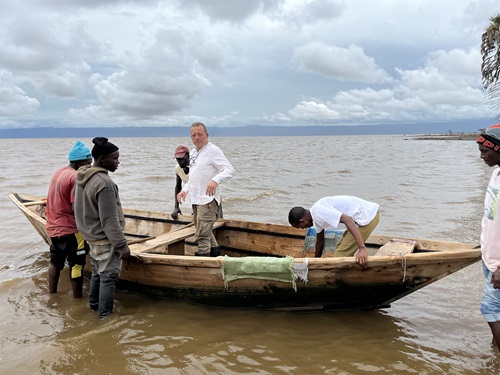This series of posts is about a field experiment that took place between 14-26 February 2022, by Frank M. Aarestrup.
As part of their collaboration, a group of researchers from the National Institute for Medical Research of Tanzania, the Technical University of Denmark and the University of Copenhagen embarked on an expedition to test a new low-cost, low-tech sequencing approach to analyzing microorganisms under real-life conditions.
Day 5: Damn the flow cells
Another beautiful day. We drove to nurse Ruth’s dispensary, and after waiting for some time, we got a sample that we took back to Kisima Ngeda tented lodge; also to ensure we had internet access when we needed to start the sequencing. We set up the equipment at the lakeshore and started the process.
Again, a workflow without major problems. Clearly, with more experience we might cut the time. While Happy and Marianne did the microbial lysis and DNA-purification, Marco and I went on the lake to test our sediment sampling equipment.

Sediment sampling
This time we knew we had to have internet access, but damn, the flow cell was completely dead. Not sure what happened, but either something was wrong with the batch or we did something wrong like storing it too cold.
We still had the now two-day-old already used flow cell left in the Minion sequencer, so we decide to try the washing protocol and see whether we could get it to work. Finally, after 7 pm, we did have a flow cell. Not with many sequencing pores (to facilitate DNA sequencing); only around 20% of a new, but at least running. We decided to leave it until the next day when we around noon had to continue to Babati.
Go to day 6 diary entry.
Funding acknowledgements:
DANIDA;
Fleming Fund; European Commission's Horizon 2020 research program (
VEO, Grant 874735).